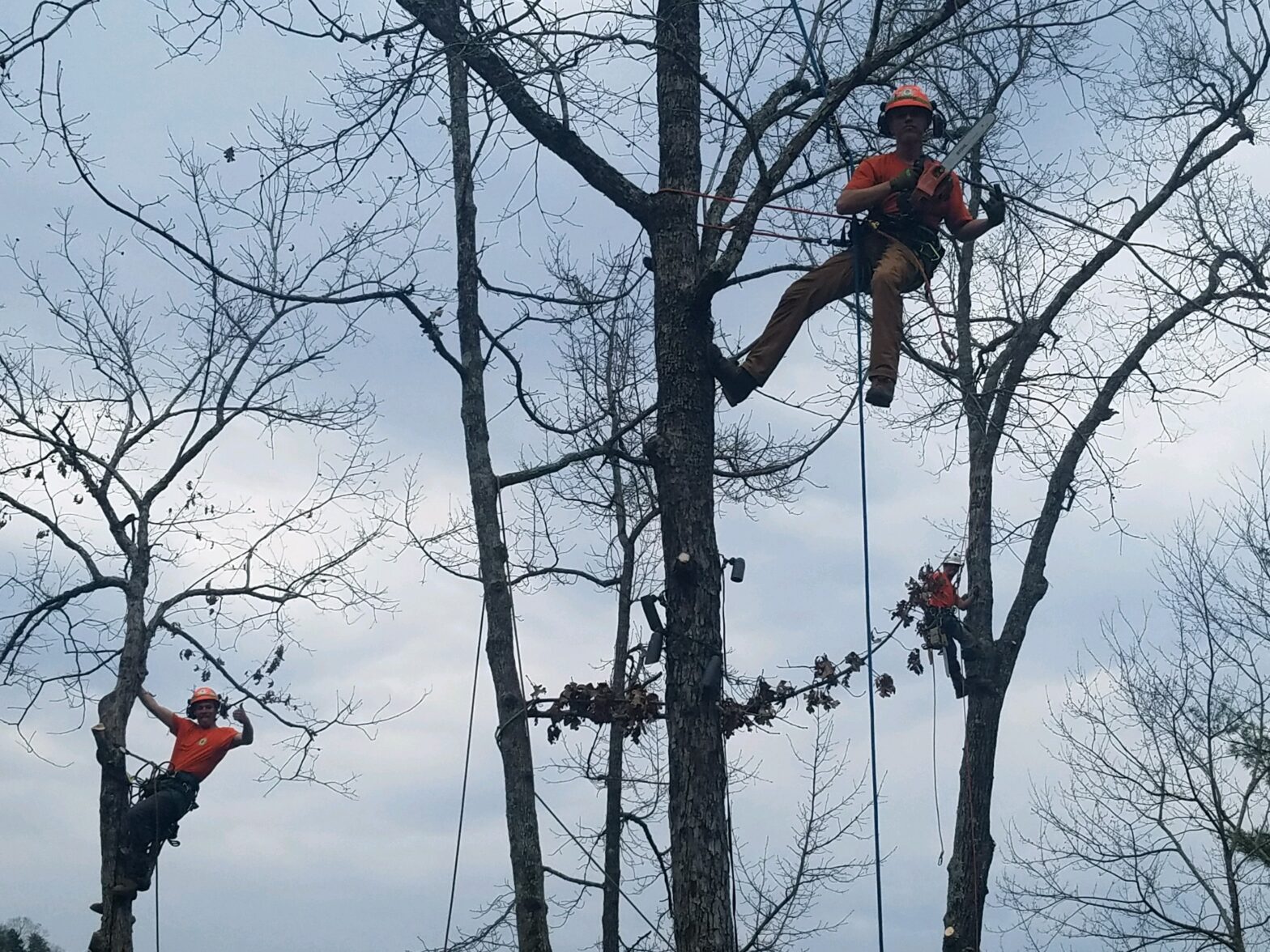The most common type of pruning involves removing branches that are diseased, visibly broken, dying, or dead. At Carolina Outdoor, our arborists have a keen eye for recognizing these types of branches whether the leaves are on the tree or not. It becomes second nature for arborists to identify and remove these types of branches in their day-to-day routine.
By removing dead, diseased, or broken branches, tree pruning assists with opening a tree’s crown to allow more air movement and additional light penetration. Removing foliage and branches also manages the risk of branch failure by reducing the weight of extended branches and limbs of the tree. There are limits for arborists as to how much pruning can be done for a tree. The general rule of thumb is to remove less than one-fourth of the live foliage of the tree.
Storms often give homeowners insight into which branches are potential threats to buildings, signs, electrical wires, and streetlights. Unfortunately, these may not be fully realized until branches have failed. Ideally, arborists can deal with poorly attached branches before they can cause harm to the tree and/or damage property. Removing these branches improves the structural integrity of the tree itself and is another way to help the tree thrive in the landscape for many years.
Other Tree Pruning Types
When trees are planted in tight spaces or too close to buildings, they may need special pruning to maintain appropriate clearance from buildings. Areas like courtyards, patios, overhead lights, or other landscape structures will need special clearance pruning to maintain the space needed to avoid maintenance problems.
A specialized pruning type is topiary pruning. This pruning involves certain types of trees or shrubs pruned to perfection and tend to be eye-catching. If you are considering a topiary plant in your landscape, regular maintenance will be required to keep its shape.
Over time, growing branches may obstruct views or hang low over the yard. Vista pruning regains the wanted view that has become blocked by tree branches. The solution may include pruning out whole branches, or thinning a tree out, or pruning off low branches to help you view the scenery you want.
The objective of what the pruning will accomplish helps guide why various branches are pruned off. At Carolina Outdoor Care, our team of experts want to improve the health of your trees. Because of this, we choose the proper pruning methods based on the type of tree, the season, and your objectives. Call us today to get your tree pruning in the schedule.



